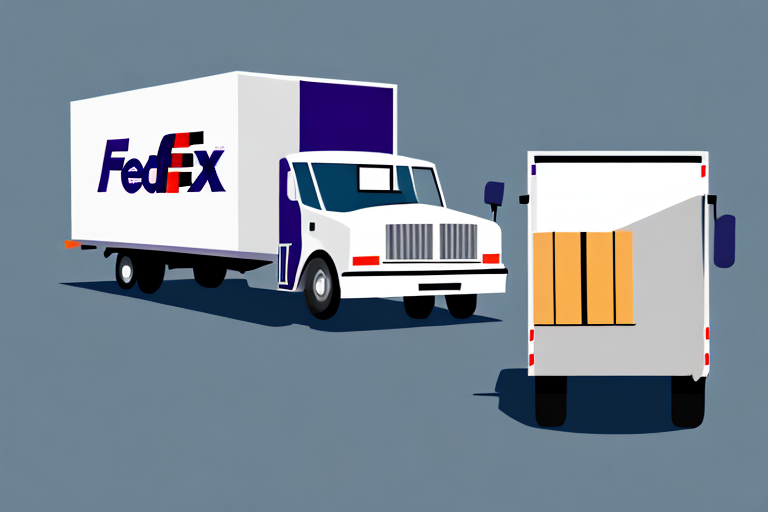Understanding and Resolving Delivery Exceptions
In the dynamic world of logistics, delivery exceptions are an unavoidable challenge. These disruptions can lead to delays, inconvenience, and frustration for both customers and businesses. For e-commerce entrepreneurs, mastering the identification and resolution of delivery exceptions is essential to enhance customer satisfaction, uphold operational efficiency, and minimize costs.
What are Delivery Exceptions?
Delivery exceptions refer to events or circumstances that hinder a package from being delivered on time or as anticipated. Common examples include:
- Failed delivery attempts
- Incorrect or incomplete addresses
- Damaged packages
- Weather-related delays
- Customs issues
- Security concerns
Essentially, a delivery exception occurs whenever a package does not meet the agreed-upon shipping terms between the carrier and the shipper.
Types of Delivery Exceptions
One prevalent type of delivery exception is when a package is held at a carrier facility for pickup instead of direct delivery to the recipient's address. This scenario can arise if the carrier cannot access the delivery location or if the recipient opts to pick up the package personally. Typically, the carrier notifies the recipient of the package's location and provides pickup instructions.
Another significant type involves delays due to security concerns. Packages containing prohibited or restricted items, or those that raise security flags, may be held for further inspection. In such cases, the carrier may require additional information from the shipper or recipient before proceeding with delivery.
Common Causes of Delivery Exceptions
Delivery exceptions can stem from various factors, including:
- Incorrect shipping labels
- Missing or incomplete address information
- Failed delivery attempts
- Damaged or lost packages
- Adverse weather conditions
- Customs clearance issues
Understanding these causes enables businesses to refine their operations and enhance delivery performance. For instance, according to a U.S. Census Bureau report, addressing incorrect address information can significantly reduce delivery delays and costs.
Impact of Delivery Exceptions on Business Operations
The repercussions of delivery exceptions on business operations are multifaceted. They can lead to:
- Increased costs related to restocking and reshipping
- Potential loss of customers
- Damage to brand reputation
- Reduced customer loyalty
- Challenges in maintaining market competitiveness
For example, a study by the Forrester Research indicates that delivery issues are a top reason for customer dissatisfaction in e-commerce. Therefore, addressing and mitigating delivery exceptions is paramount for the success of any online business.
How to Identify Delivery Exceptions
Recognizing delivery exceptions promptly is crucial for effective resolution. Businesses can utilize various strategies, such as:
- Implementing real-time tracking systems offered by carriers
- Setting up automated notifications for status updates
- Monitoring shipment data to detect irregularities
Understanding the carrier's policies and procedures for handling exceptions ensures a smooth delivery process. For instance, leveraging tracking tools provided by carriers like UPS or FedEx can provide businesses with valuable insights into their shipments' status.
Measures to Prevent Delivery Exceptions
Proactive measures can significantly reduce the occurrence of delivery exceptions. Key strategies include:
- Verifying Shipping Information: Ensure that all address details are accurate and complete before dispatch.
- Using Quality Packaging: Invest in durable packaging materials and proper labeling to protect contents during transit.
- Advanced Shipment Preparation: Schedule shipments well ahead of pickup times to accommodate any unforeseen delays.
- Compliance with Customs Requirements: Ensure all necessary documentation and legal requirements are met for international shipments.
Additionally, providing clear instructions to carriers regarding delivery specifics can further minimize exceptions. Utilizing advanced software solutions for shipment tracking and management can also enhance visibility and control over the delivery process.
Best Practices for Addressing Delivery Exceptions
Effectively addressing delivery exceptions involves a combination of best practices, including:
- Documentation: Keep detailed records of all exceptions to facilitate analysis and resolution.
- Root Cause Analysis: Investigate the underlying reasons for exceptions to implement corrective measures.
- Follow-Up Processes: Establish clear protocols for resolving outstanding issues promptly.
- Employee Empowerment: Train staff to take immediate corrective actions when exceptions arise.
Maintaining transparent communication channels with customers is also essential. Regular updates and alternative delivery solutions can help maintain trust and satisfaction even when issues occur.
Strategies for Resolving Delivery Exceptions
Resolving delivery exceptions requires tailored strategies based on the specific circumstances. Effective approaches include:
- Timely Updates: Inform customers promptly about the status of their shipments and any issues encountered.
- Clear Communication with Carriers: Collaborate closely with carriers to identify and address the root causes of exceptions.
- Proactive Customer Service: Offer swift solutions such as replacements or refunds to maintain customer satisfaction.
- Technological Integration: Use automated systems to streamline the resolution process and enhance efficiency.
For example, partnering with carriers to review and optimize shipping procedures can prevent recurring exceptions. Additionally, maintaining comprehensive shipment records aids in identifying trends and implementing effective solutions.
Collaboration with Carriers to Resolve Delivery Exceptions
Establishing strong collaborative relationships with carriers is vital for minimizing delivery exceptions. Key actions include:
- Detailed Shipment Information: Provide carriers with comprehensive details about each shipment to facilitate accurate handling and routing.
- Contingency Planning: Develop backup plans for unexpected events such as severe weather or logistical disruptions.
- Regular Communication: Maintain open lines of communication to swiftly address any issues that arise during transit.
Effective collaboration ensures that both businesses and carriers can respond efficiently to exceptions, thereby enhancing overall delivery performance.
The Importance of Transparent Communication in Resolving Delivery Exceptions
Transparent communication plays a critical role in managing delivery exceptions. By keeping customers informed about the status of their shipments and any issues encountered, businesses can:
- Manage Expectations: Clearly setting expectations helps prevent misunderstandings and dissatisfaction.
- Build Trust: Honest communication fosters trust and strengthens customer relationships.
- Gather Feedback: Engaging with customers provides valuable insights for improving delivery processes.
For instance, proactively notifying customers about delays and the steps being taken to resolve them can mitigate frustration and enhance the overall customer experience.
Analyzing Data to Improve Delivery Performance and Reduce Exceptions
Data analysis is instrumental in identifying patterns and trends related to delivery exceptions. By scrutinizing delivery data, businesses can:
- Identify Root Causes: Determine the primary factors contributing to exceptions and address them systematically.
- Track Performance Metrics: Monitor key performance indicators such as on-time delivery rates and exception frequencies to gauge operational effectiveness.
- Implement Targeted Improvements: Use data-driven insights to refine logistics strategies and enhance delivery reliability.
For example, utilizing tools like Tableau for data visualization can help businesses identify trends and make informed decisions to improve their delivery operations.
Steps to Take When a Customer Reports a Delivery Exception
When a customer reports a delivery exception, businesses should undertake the following steps to resolve the issue effectively:
- Investigate the Issue: Review shipping and tracking information to understand what went wrong.
- Contact the Carrier: Reach out to the carrier to obtain detailed information and seek solutions.
- Communicate with the Customer: Keep the customer informed about the progress of the resolution.
- Provide a Resolution: Offer appropriate remedies such as reshipping the package, issuing a refund, or providing a discount on future purchases.
- Document the Exception: Record the details of the exception for future reference and analysis.
Implementing a structured approach ensures that delivery exceptions are handled promptly and efficiently, maintaining customer trust and satisfaction.
Understanding the Role of Technology in Managing and Resolving Delivery Exceptions
Technology is a cornerstone in managing and resolving delivery exceptions. Key technological tools include:
- Real-Time Tracking Systems: Enable businesses and customers to monitor shipments in real-time, providing timely updates on package status.
- Automated Notifications: Send alerts for any delivery exceptions, allowing for swift action.
- Customer Relationship Management (CRM) Software: Facilitates efficient communication and resolution of customer issues.
- Data Analytics Platforms: Analyze delivery data to identify trends and optimize logistics strategies.
Adopting advanced technologies not only streamlines the delivery process but also enhances the ability to respond to exceptions proactively. For instance, integrating AI-powered chatbots can provide instant support to customers facing delivery issues, thereby improving response times and satisfaction.
Evaluating the Effectiveness of Your Delivery Exception Resolution Strategies
Regular evaluation of delivery exception resolution strategies is essential to ensure their continued effectiveness. This involves:
- Analyzing Performance Metrics: Assess key indicators such as resolution time, customer satisfaction scores, and recurrence rates of exceptions.
- Gathering Customer Feedback: Solicit feedback to understand customer experiences and identify areas for improvement.
- Reviewing Operational Processes: Examine the efficiency of current processes and identify bottlenecks or inefficiencies.
- Implementing Continuous Improvement: Use insights from evaluations to refine strategies and enhance delivery operations continuously.
Tools like Microsoft Power BI can aid in visualizing performance data, making it easier to identify trends and make informed decisions to optimize resolution strategies.
Conclusion: Building a Robust System for Managing and Resolving Delivery Exceptions
Delivery exceptions are an inherent aspect of e-commerce logistics, but their impact can be significantly mitigated through a structured approach. By understanding the causes of exceptions, implementing preventive measures, and adopting best practices for resolution, businesses can reduce disruptions, lower costs, and enhance customer satisfaction. Establishing a robust system for managing and resolving delivery exceptions not only optimizes logistics operations but also strengthens a business's competitive edge in the marketplace.






















